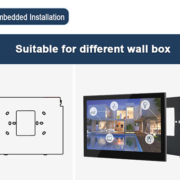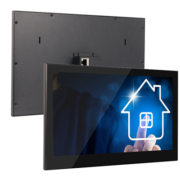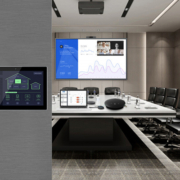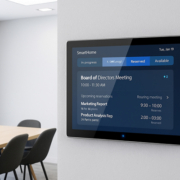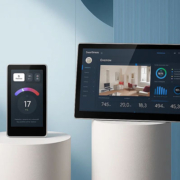Smart Control Panel PCBA Development: Key Considerations and Trends
In the rapidly evolving world of smart homes, industrial automation, and commercial buildings, the development of smart control panels has become a cornerstone for seamless operation and enhanced user experience. A crucial component in these control panels is the Printed Circuit Board Assembly (PCBA), which serves as the backbone for electrical connections and signal transmission. The development of a high-performance, reliable, and cost-effective PCBA is essential to ensure the control panels function optimally across various applications.
What is a Smart Control Panel PCBA?
A Smart Control Panel PCBA is an assembly of electronic components mounted on a printed circuit board (PCB) that integrates key control features, such as lighting, HVAC systems, security systems, and more. The PCBA serves as the heart of the smart control panel, enabling the board to process signals, communicate with other devices, and execute commands efficiently.
Key Components of a Smart Control Panel PCBA
-
Microprocessor/MCU: At the core of the PCBA, a microprocessor or microcontroller (MCU) is responsible for processing signals and executing commands based on the input received from sensors or the user. Common choices for smart control panels include processors like the RK3566 or RK3568 from Rockchip, which offer robust processing power and energy efficiency.
-
Connectivity Modules: Smart control panels require wireless connectivity, so components like Wi-Fi, Bluetooth, Zigbee, or Z-Wave are integrated into the PCBA for seamless communication with other smart devices.
-
Power Management: A reliable power supply system is essential, especially when the device supports Power over Ethernet (PoE). Efficient power management ensures that the control panel operates smoothly without overheating or wasting energy.
-
Input/Output Interfaces: The PCBA typically includes various interfaces, including HDMI, USB, RS485, and I2C, for connecting external devices or sensors. These interfaces ensure that the control panel can be easily integrated into various systems, from home automation to industrial applications.
-
Sensors and Actuators: Sensors like temperature, humidity, motion detectors, or touch sensors are vital for the control panel’s functionality. Actuators are responsible for triggering actions, such as turning on lights, adjusting HVAC systems, or opening/closing curtains.
-
Display Interface: Depending on the design, the PCBA may include connections for a touch screen or display module, which acts as the user interface. This allows users to control and monitor their smart systems directly.
Considerations in Smart Control Panel PCBA Development
-
Design for Integration: As the IoT ecosystem grows, it is important for the PCBA to support multiple communication protocols (Wi-Fi, Zigbee, Z-Wave, etc.) and be easily integrated into various home automation systems. Developers must ensure that the PCBA can handle different protocols while being adaptable to future technological advancements.
-
Miniaturization and Form Factor: In many cases, smart control panels are wall-mounted or embedded in compact spaces. As such, PCBAs must be designed with a small form factor, ensuring that all necessary components are efficiently laid out without compromising performance. The increasing demand for sleek designs without sacrificing functionality has led to a focus on miniaturization.
-
Thermal Management: As smart control panels are often in use for long periods, managing heat dissipation is critical. Proper thermal design can prevent overheating and ensure the longevity of the PCBA. Heat sinks, thermal vias, and efficient component placement are essential strategies for thermal management.
-
Customization and Scalability: Different smart control panels have different requirements based on the target application. A robust PCBA design allows for OEM and ODM customization, where the board’s layout, features, and performance can be adjusted to meet specific needs. This flexibility allows manufacturers to cater to various markets, from residential homes to large-scale industrial settings.
-
Durability and Reliability: Since smart control panels are often deployed in various environments, ranging from indoor spaces to outdoor installations, ensuring the PCBA’s durability is essential. The components should be capable of withstanding harsh conditions, including temperature fluctuations, humidity, and electrical surges.
-
Compliance and Certification: Depending on the market, there may be specific industry standards and regulations that the PCBA needs to comply with, such as CE, FCC, or RoHS certifications. Ensuring compliance from the design phase through production is crucial to avoid delays or legal challenges.
Trends in Smart Control Panel PCBA Development
-
AI and Machine Learning Integration: Increasingly, smart control panels are incorporating AI capabilities to enable more sophisticated features like voice recognition, facial recognition, and predictive automation. This trend will drive the need for more powerful processors and specialized chips on the PCBA.
-
5G Connectivity: As 5G networks continue to roll out globally, the demand for faster, more reliable connections in smart homes and industrial applications grows. Future PCBAs will likely incorporate 5G connectivity for real-time control and monitoring of devices.
-
Edge Computing: With the rise of edge computing, more processing power is being integrated into the smart control panel itself, reducing the need to rely heavily on cloud infrastructure. This requires PCBAs with greater processing power and memory to support local data analysis and decision-making.
-
Energy Efficiency: The push for more sustainable and energy-efficient solutions in the smart home industry is expected to continue. Smart control panel PCBAs will incorporate energy-efficient components, power-saving modes, and PoE features to reduce the environmental footprint.
-
Wireless Charging Integration: Another trend is the integration of wireless charging features within the smart control panel itself, allowing users to charge their devices seamlessly while maintaining a tidy and wire-free setup.
The development of smart control panel PCBAs is a critical aspect of creating reliable, efficient, and customizable smart devices. As the smart home and industrial automation markets continue to expand, the need for advanced PCBAs that integrate cutting-edge features like wireless connectivity, power management, and AI processing will grow. Manufacturers that invest in robust design, flexibility, and reliability will be well-positioned to meet the demands of the future.
Portworld’s expertise in OEM and ODM solutions enables customization of PCBAs to meet specific requirements, ensuring that each product performs optimally across a wide range of applications.

